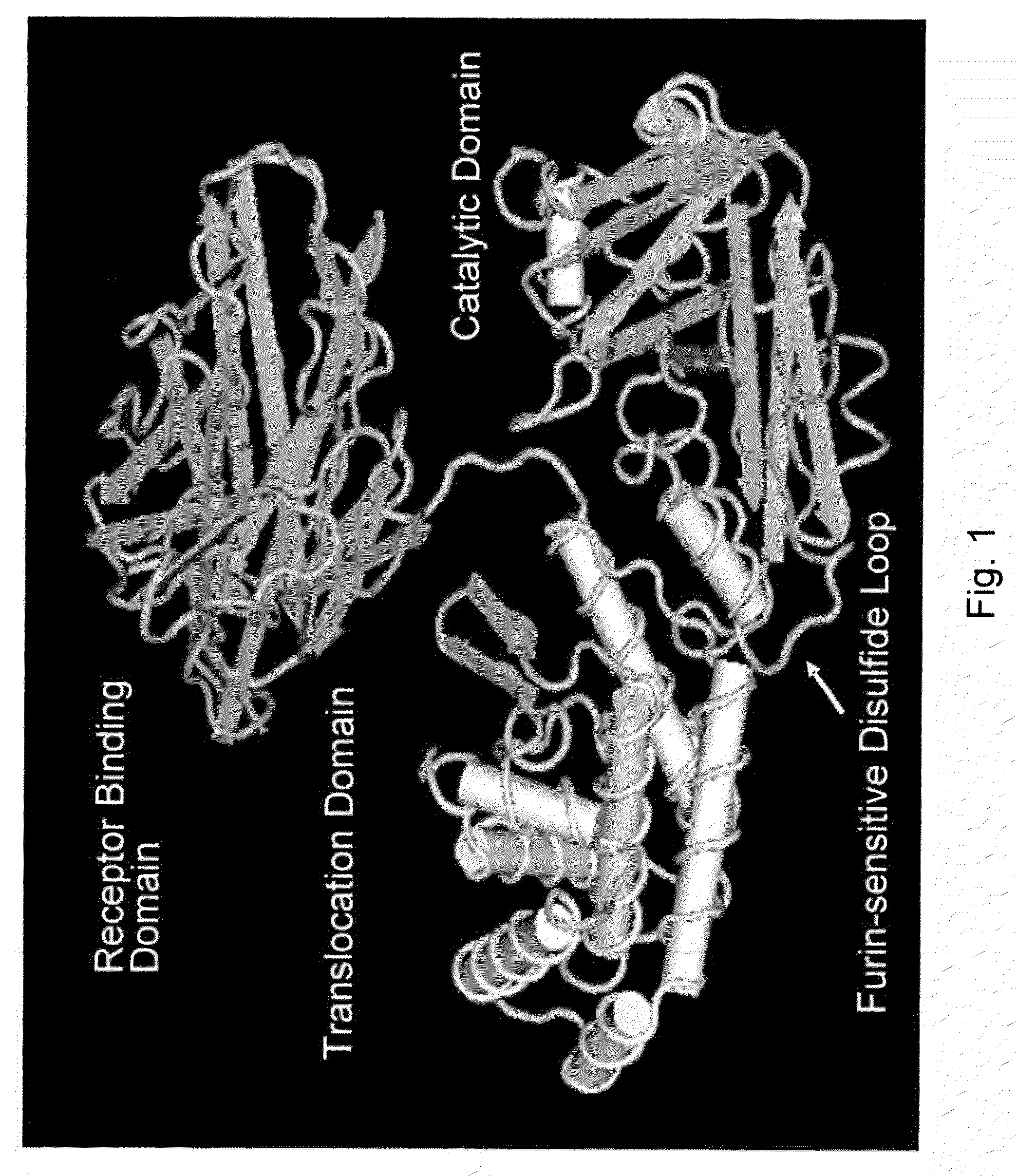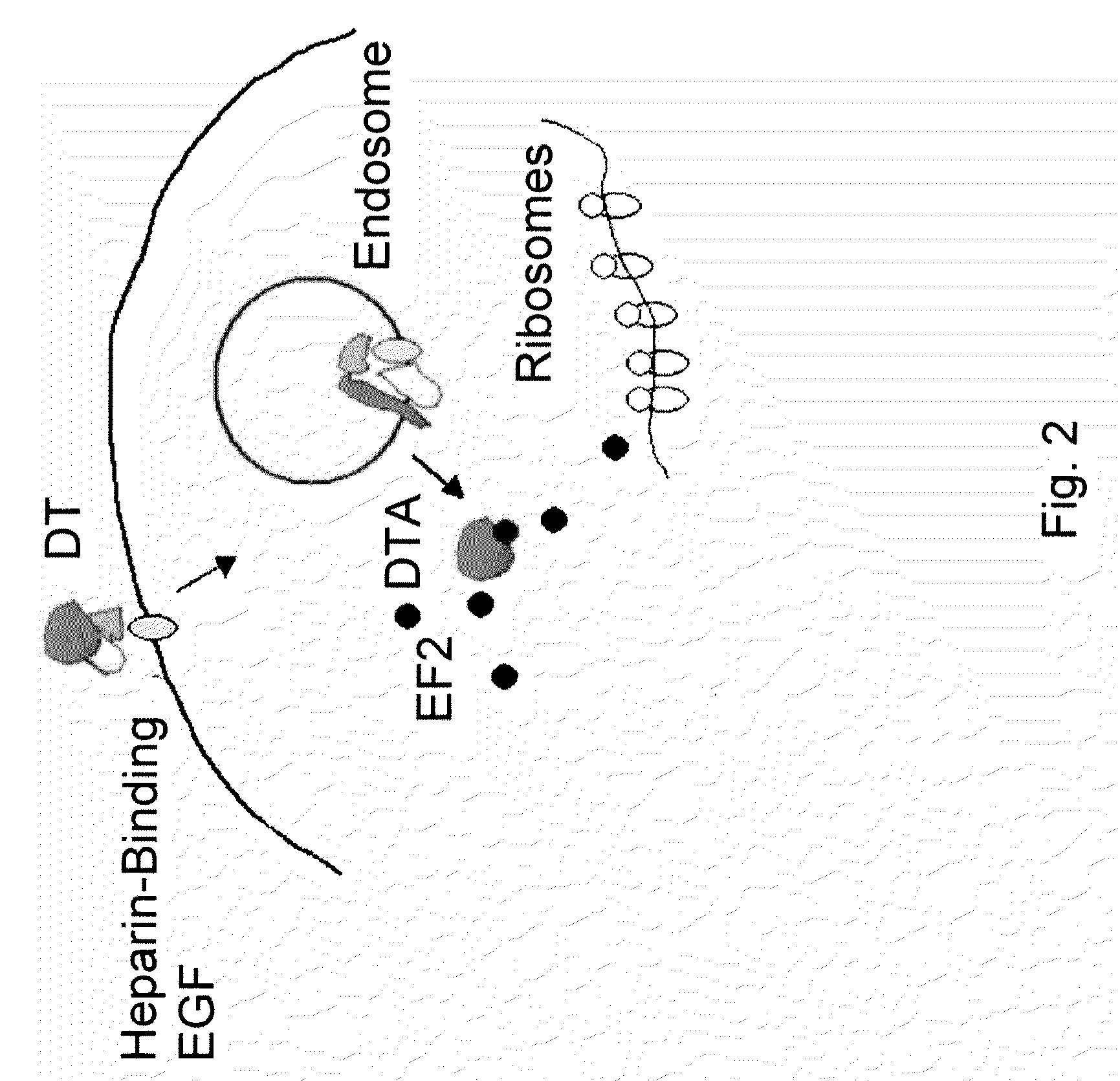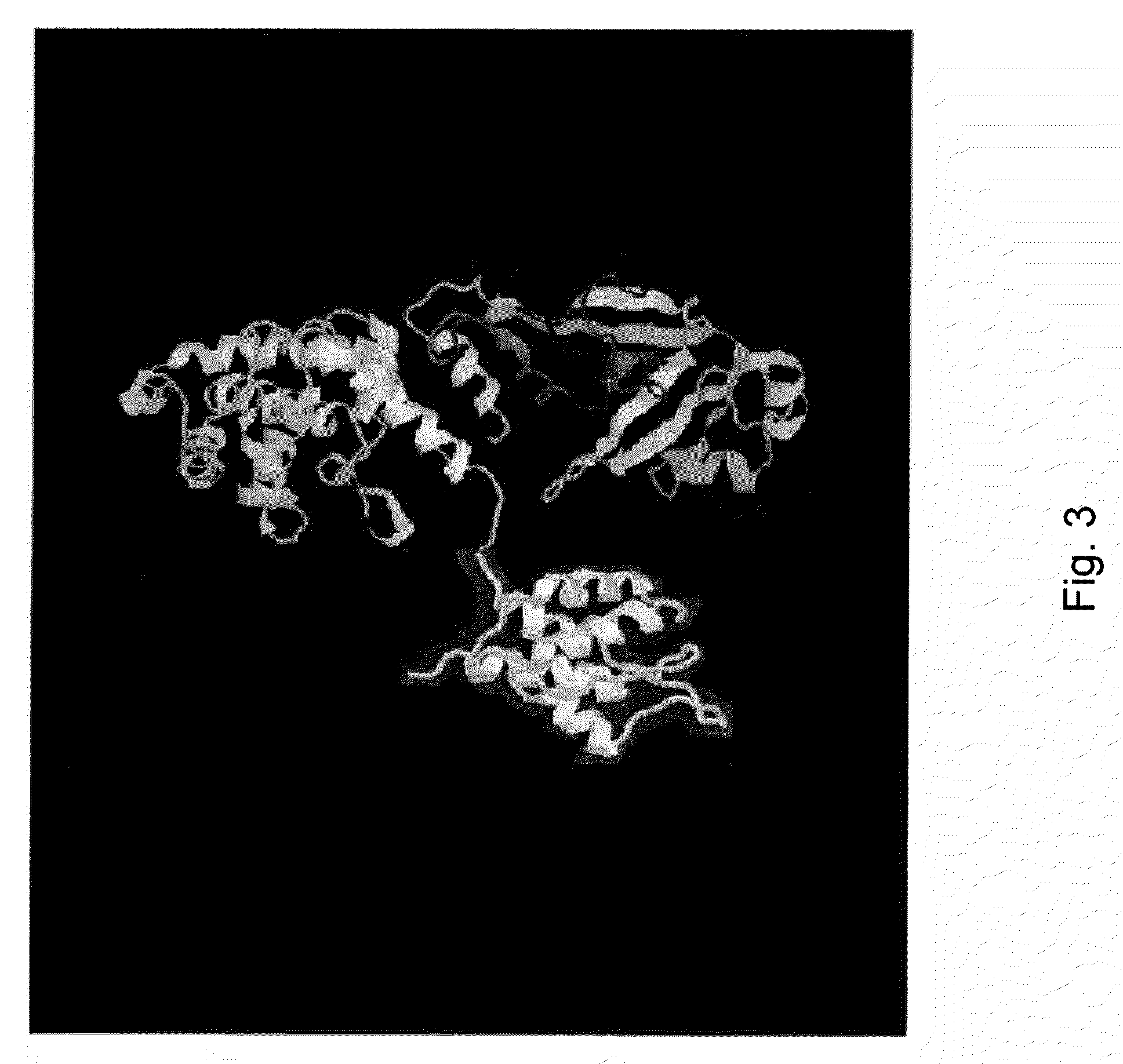Methods and compositions based on diphtheria toxin-interleukin-3 conjugates
a technology of diphtheria toxin and conjugate, applied in the field of methods, can solve the problems of affecting the survival rate of patients, chemotherapeutic agents are notoriously toxic, and the overall survival benefit of newer targeted therapies is limited, so as to improve the prophylactic effect of another therapy, and reduce the severity, duration of cancer.
- Summary
- Abstract
- Description
- Claims
- Application Information
AI Technical Summary
Benefits of technology
Problems solved by technology
Method used
Image
Examples
example 1
6.1 Example 1
6.1.1 Patients and Study Design
[0331]The following example describes the results of a clinical study in which a diphtheria toxin-interleukin-3 conjugate was administered to patients suffering from acute myeloid leukemia (AML).
[0332]Patients were diagnosed with AML based on bone marrow biopsy and either relapsed disease or poor-risk AML (treatment-related, prior myelodysplastic syndrome (MDS), patient age >70 years, or unfavorable cytogenetics and not candidate for allogeneic transplantation). Patients had to have a performance status 3g / dL, creatinine 40%), anti-DT pretreatment serum concentration <2.4 μg / ml, be willing to give informed consent and be treated at an approved site, be willing to use an approved form of birth control while on study, have no concurrent serious medical problems or uncontrolled infections or DIC or pregnancy, not have active CNS leukemia, not have had a myocardial infarction within the past six months, not require oxygen, and not have an alle...
example 2
6.2 Example 2
6.2.1 Patients and Methods
[0338]Patients had to have AML based on bone marrow biopsy and either disease, relapsed disease, refractory disease or poor-risk AML (treatment-related, prior MDS, patient age >70 years, or unfavorable cytogenetics and not candidate for allogeneic transplantation). Patients had to have a performance status 3 g / dL, creatinine 40%), anti-DT pretreatment serum concentration <2.4 mg / ml, be willing to give informed consent and be treated at an approved site, be willing to use an approved form of birth control while on study, not have concurrent serious medical problems or uncontrolled infections or DIC or pregnancy, not have active CNS leukemia, not have had a myocardial infarction within the past six months, not require oxygen, and not have an allergy to DT.
[0339]Patients received 15 minute infusions of DT388IL-3 three times weekly for two weeks with interpatient dose escalation at doses of 4-12.5 μg / kg / dose.
[0340]6.2.2 Results—Patient Characterist...
PUM
 Login to View More
Login to View More Abstract
Description
Claims
Application Information
 Login to View More
Login to View More - R&D
- Intellectual Property
- Life Sciences
- Materials
- Tech Scout
- Unparalleled Data Quality
- Higher Quality Content
- 60% Fewer Hallucinations
Browse by: Latest US Patents, China's latest patents, Technical Efficacy Thesaurus, Application Domain, Technology Topic, Popular Technical Reports.
© 2025 PatSnap. All rights reserved.Legal|Privacy policy|Modern Slavery Act Transparency Statement|Sitemap|About US| Contact US: help@patsnap.com



